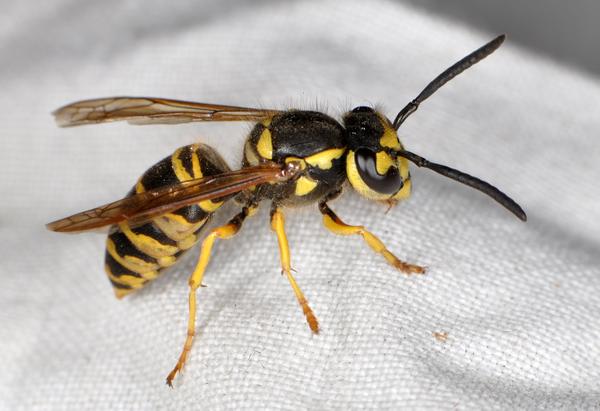Yellowjackets in Turf
en Español / em Português
El inglés es el idioma de control de esta página. En la medida en que haya algún conflicto entre la traducción al inglés y la traducción, el inglés prevalece.
Al hacer clic en el enlace de traducción se activa un servicio de traducción gratuito para convertir la página al español. Al igual que con cualquier traducción por Internet, la conversión no es sensible al contexto y puede que no traduzca el texto en su significado original. NC State Extension no garantiza la exactitud del texto traducido. Por favor, tenga en cuenta que algunas aplicaciones y/o servicios pueden no funcionar como se espera cuando se traducen.
Português
Inglês é o idioma de controle desta página. Na medida que haja algum conflito entre o texto original em Inglês e a tradução, o Inglês prevalece.
Ao clicar no link de tradução, um serviço gratuito de tradução será ativado para converter a página para o Português. Como em qualquer tradução pela internet, a conversão não é sensivel ao contexto e pode não ocorrer a tradução para o significado orginal. O serviço de Extensão da Carolina do Norte (NC State Extension) não garante a exatidão do texto traduzido. Por favor, observe que algumas funções ou serviços podem não funcionar como esperado após a tradução.
English
English is the controlling language of this page. To the extent there is any conflict between the English text and the translation, English controls.
Clicking on the translation link activates a free translation service to convert the page to Spanish. As with any Internet translation, the conversion is not context-sensitive and may not translate the text to its original meaning. NC State Extension does not guarantee the accuracy of the translated text. Please note that some applications and/or services may not function as expected when translated.
Collapse ▲Description
Yellowjackets are house fly-sized wasps with distinct yellow and black markings and a few hairs (Figure 1). They construct a similar type of paper nest; however, it will be tan in color, much smaller in size compared to the hornet nest, and is usually found in an underground cavity. Common locations for nests are in lawns, particularly in sandy exposed areas, as well as at the base of trees or shrubs. Occasionally, yellow jackets nest in attics or walls voids of houses or storage buildings.
Cultural Control
The first decision to make is whether control is actually necessary. Two points to remember:
- In spite of their reputations, hornets and yellowjackets are actually beneficial because they prey on many insects that we consider to be pests. They also serve as food for bears, skunks, birds, and other insects.
- Unlike honey bees, hornet and yellowjacket colonies die out each year.
If a hornet nest is built high in a tree, you may choose to simply wait until the colony dies out in late fall or early winter. The nest will slowly deteriorate from weather or from attack by hungry birds.
Chemical Control
If a nest is located where people may be stung or if you (or others) are hypersensitive to bee / wasp stings, then colony destruction may be appropriate. Here are some points to consider as you decide how to approach the problem:
- Control is best achieved by applying a pesticide directly into the nest opening. This can be done at anytime of the day, but near dusk, most of the wasps are more likely to be inside the nest. You can use any of the aerosol "Wasp & Hornet" sprays that propel insecticide in a stream about 10-12 feet. Direct the spray into the nest opening and then move away from the area in case any of the wasps emerge from the nest. You may need to be repeat the treatment on the following evening.
- Long sleeved shirt and long pants may be worn when spraying to make the applicator feel more at ease.
- Do not hold a lit flashlight or stand near car headlights or other lights. Emerging wasps may be attracted in that direction and sting anyone nearby.
- Do not pour gasoline or petroleum down a nest hole. This is extremely hazardous and environmentally unsound.
References
- Controlling Bald-Faced Hornets and Yellowjackets in and Around Structures, Biting and Stinging Pests. Waldvogel, M., P. Alder, and S. B. Bambara. 2018.
- Common name: yellowjackets and hornets, scientific name: Vespula and Dolichovespula spp. (Insecta: Hymenoptera: Vespidae). Grissell , E. E. and T. R. Fasulo. 2013 (revised). Featured Creatures, Entomology & Nematology. FDACS/DPI, EDIS, UF|IFAS. Publication Number: EENY-81.
- Yellowjackets of America North of Mexico. Akre, R. D., et al. 1980. U.S. Department of Agriculture, Agriculture Handbook No. 552, 102 pp.
- Pest Control for Professional Turfgrass Managers. Bowman, D. et al. 2017. NC State Extension Publication AG-408. 81 pp.
- NC State Extension Plant Pathology Publications and Factsheets
- NC State Horticultural Science Publications
- North Carolina Agricultural Chemicals Manual
For assistance with a specific problem, contact your local Cooperative Extension center.



